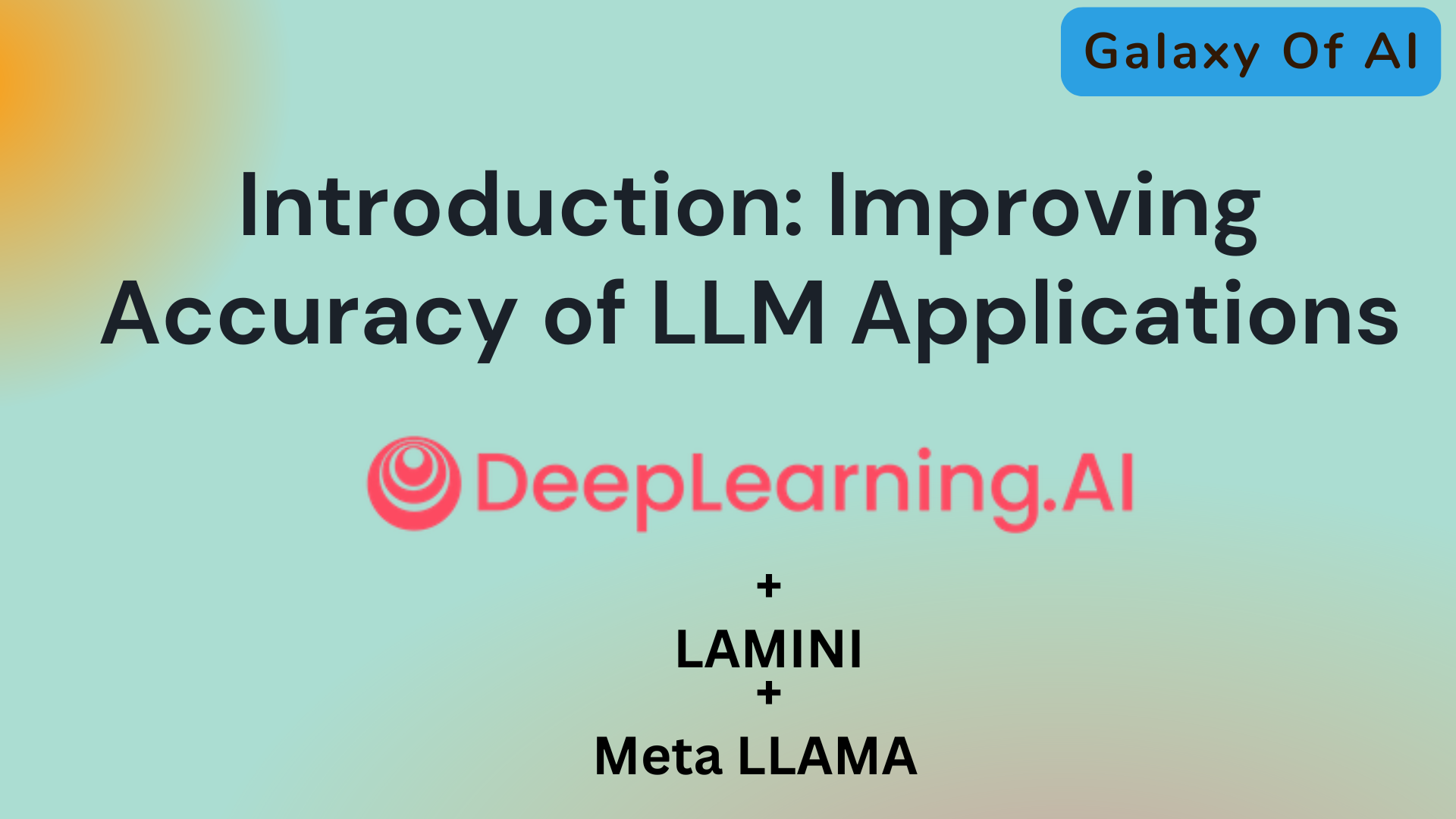Hello Learners…
Welcome to the blog…
Table Of Contents
- Introduction
- Introduction: Improving Accuracy of LLM Applications
- Steps to Improve the Accuracy of LLM Applications
- Summary
- References
Introduction
In the post, Introduction: Improving Accuracy of LLM Applications, we give overview of the how we can improve accuracy of LLM applications.
Introduction: Improving Accuracy of LLM Applications
As we know that AI Application now perform tasks that were previously very challenging for computers, such as providing a natural language interface to a database.
But these applications often perform well in some areas and yet struggle in others.
Here we are trying to implement a development steps to systematically improve our applications performance.
To do that we create an application dataset to measure performance, prompt engineer and then finally fine-tune our model.
The llama models are widely used in numerous applications. That models are created after extensive training and rank highly in most foundation model benchmarks.
Since the models are trained on public data sets and tasks, they may not perform as well on applications requiring proprietary data or on tasks that they are not specifically trained for.
As we know that Meta released these models as an open search, these allows any developers to fine-tune models for their specific applications.
This means user can fine-tune the models for their specific tasks. There are many applications especially with smaller models where users fine-tuned them for tasks like text to SQL classifications, questions and answers, recommendation, and summarisation.
They have also been adapted to understand the proprietary datasets such as financial, customer data and legal information.
Fine-tuning is not only the options available to improve accuracy of the generated answers by LLM, but this is one options that we can try.
Steps to Improve the Accuracy of LLM Applications
We can try fine-tuning after applying simple options that are available.
First, we have to build our LLM applications, apply some prompt engineer with self reflection.
Next, It’s important to to get rigorous in evaluating the models performance. so we can say that it is ready to production or we have to work more to improve accuracy of our LLM applications.
After all of this if it works fine and meet our requirements then great, if after lot of prompt engineering work it is not yet working properly or not working accurately enough.
Then next step is to use LLMs and create a datasets to fine-tuning our model.
Myth About Fine-Tuning LLM Models
One myth of fine-tuning any LLM modes is we don’t have enough data, Here we will see also that we have enough data to trained any LLM model, and there are ways to significantly amplify the data you do have with LLM themselves.
Fine-Tuning also used to be slow and costly, but by using parameter efficient fine-tuning techniques like LoRA, which stands for low rank adaption, the time and costs have dropped dramatically.
Lamini memory tuning is a techniques that gives us new frontier of factual accuracy, reducing time and developer effort to get to the same level or higher accuracy.
Using optimised fine-tuning techniques we can teach our LLM thousands of new facts in just minutes on a single A100 or MI2 50 GPU.
